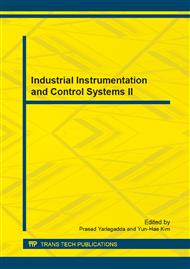p.1733
p.1738
p.1744
p.1748
p.1757
p.1761
p.1765
p.1771
p.1776
Research of Link Adaptation Technology and Solutions in Wireless Communication Network
Abstract:
With the rapid growth of the demand for wireless data services, it becomes a hotspot in the field of mobile communication to maximize data transfer rate on the limited bandwidth. Link adaptation technology has a strong advantage in improving the data transfer rate and the spectrum utilization rate, thus becoming one of the key technologies in current and future mobile communication systems. This paper aims to study the adaptive technology of the wireless link, emphasizing on the basic principles and existing implementations of the adaptive modulation and coding (AMC) and the hybrid-automatic repeat request (HARQ) which are both mainstream link adaptive technologies. Finally, a new link adaptation technology implementation is given by combining the advantages of AMC and HARQ.
Info:
Periodical:
Pages:
1757-1760
Citation:
Online since:
July 2013
Authors:
Price:
Сopyright:
© 2013 Trans Tech Publications Ltd. All Rights Reserved
Share:
Citation:


